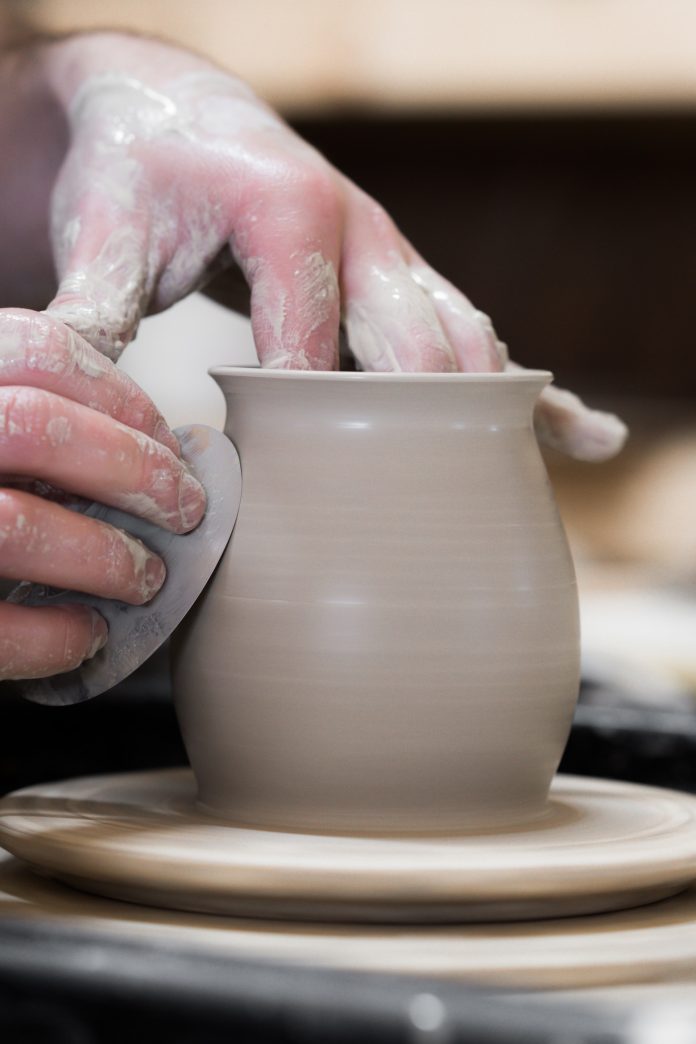Having developed a passion for fine art in his school years, Jeremy Casson runs his own practice mentoring other conservators and takes a special interest in painting and pottery in his spare time.
Like any art form, pottery does not have a specific set of rules. Creativity has no bounds. Nevertheless, novice potters must familiarise themselves with the clay and the way it reacts and behaves.
It can take years to become a master potter. As with learning any new skill, students can expect to make mistakes along the way. This article will provide tips for beginner potters, including an outline of common mistakes and how to avoid them.
When throwing clay, it is important for the potter to keep their elbows braced. Wheel speed is also crucial. The wheel should start fast, gradually getting slower. The wheel should be running at full speed while centring, which may feel counterintuitive to the beginner – but the faster the wheel is turning, the easier it is.
Once the clay is centred, the potter will need to slow down as the pot gets bigger. The taller the pot gets the thinner the walls will become – and the stronger the centrifugal forces will be – making it more likely to flop. Therefore, as the pot gets taller, the wheel needs to turn slower.
Many new potters make the mistake of not sitting close enough to the wheel head. It is taxing on the body to throw at arm’s length; it is far more effective to guide the clay using the weight of the upper body. Rather than coming away from sessions achy, potters should minimise the pressure on their knuckles, wrists, elbows, joints and back. Indeed, many potters with back problems prefer to work standing up or bracing their backs against a wall. Existing injuries aside, when the potter finishes their session aching or in pain, they probably need to tweak their technique.
Water is another critical factor. The amount of water the potter uses while throwing is key. The clay should never feel sticky, which is likely to result in a wonky pot. However, at the same time, using too much water is likely to result in the piece getting progressively smaller, with clay washed away into the splash plan. To achieve an ideal balance, the pot should be kept glossy at all times without flooding it with water, with the potter regularly removing any excess from the base using a sponge.
Mastering the art of pottery-making is not an overnight process, and it can be frustrating in the beginning. Time, patience and perseverance are key. Many master potters liken learning to cast a pot to learning to ride a horse, pointing out that clay should be treated like a wild animal, with the potter learning to understand its behaviour and work with it rather than pushing against it.

